Are you considering entering into a joint venture partnership and unsure where to start? Crafting a solid letter template for your agreement can help streamline the process and ensure clarity for all parties involved. In this article, we'll guide you through the essential elements to include in your letter, making it easier to outline roles, responsibilities, and expectations. So, let's dive in and explore how to create a partnership agreement that sets you up for success!

Introduction of Parties
The introduction of parties is a crucial section in a joint venture partnership agreement, establishing the identities and roles of the entities involved. Party A, TechInnovate LLC, a registered corporation in Delaware, specializes in software development and has a solid market presence in North America, boasting annual revenues exceeding $5 million. Party B, EcoSolutions Inc., headquartered in California, focuses on sustainable technologies and has successfully launched several eco-friendly products since its inception in 2015. Both parties share a vision of combining their expertise to tap into the growing sustainable tech market, projected to reach $1 trillion by 2030. This joint venture aims to leverage TechInnovate's innovative software capabilities alongside EcoSolutions' green technology expertise to create cutting-edge products that promote environmental sustainability.
Purpose and Objectives
The purpose of the joint venture partnership agreement is to establish a collaborative framework for two or more entities to jointly develop a specific project or business opportunity, often in the realm of industries such as technology, real estate, or sustainable energy. Objectives include pooling resources, such as financial investments and intellectual property, to achieve shared goals, like increasing market share or innovating products to enhance competitiveness in the target market, which could be a specific geographic region like Southeast Asia or a particular sector like renewable energy technology. Joint ventures can lead to mutual benefits, such as risk sharing, leveraging complementary strengths, and gaining access to new customer bases, ultimately aiming for long-term profitability and growth for all involved parties.
Roles and Responsibilities
The joint venture partnership agreement outlines the roles and responsibilities of each partner involved in the collaborative enterprise. Each partner plays a crucial role in achieving shared goals, such as revenue generation and market expansion. The primary partner, often leading the project, is responsible for strategic planning, resource allocation, and overall management of day-to-day operations. The secondary partner may focus on specific tasks, such as marketing efforts, product development, or financial oversight. Clear delineation of duties reduces conflict and enhances efficiency, ensuring that each partner understands their commitments. Regular assessment meetings, scheduled quarterly, facilitate communication, allowing partners to address challenges and adapt strategies. Successful execution of responsibilities relies on mutual trust, transparency, and adherence to timelines. A well-structured framework fosters a harmonious partnership, driving innovation and competitive advantage in the marketplace.
Financial Contributions
A joint venture partnership agreement outlines the terms and conditions of collaboration between entities. Financial contributions represent a critical aspect of this agreement, specifying the monetary investments each partner commits to the joint venture. Exact percentages of ownership may depend on the total capital contributed, which could range from thousands to millions of dollars depending on the scope of the project, such as real estate development or technology innovation. Each partner must clarify the timing of contributions, whether one-time payments, phased investments, or ongoing financial support throughout the project's lifecycle. Documentation should include provisions for adjustments in case of unforeseen financial challenges, ensuring transparency and mutual understanding of the partners' fiscal responsibilities. Legal entities involved, such as limited liability companies (LLCs) or corporations, should also be defined, helping to establish liability protections relative to financial investments made.
Duration and Termination
A joint venture partnership agreement typically outlines the duration and termination clauses to provide clarity on the timeline and conditions under which the partnership may dissolve. The duration section specifies the lifespan of the joint venture, often indicating a fixed term, such as five years, or until a particular project's completion, such as a real estate development in downtown Atlanta. The termination section details conditions that may trigger dissolution, such as mutual consent, failure to meet financial milestones, or legal violations, and may also address procedures for asset division and liabilities, ensuring a fair process, with potential examples including the distribution of intellectual property or remaining capital contributions from each partner.

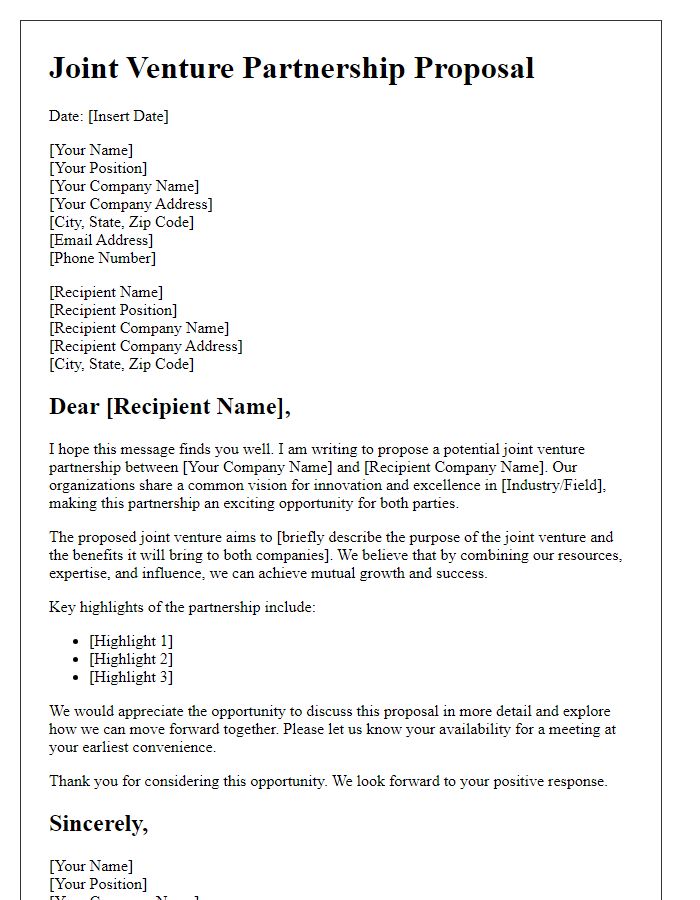
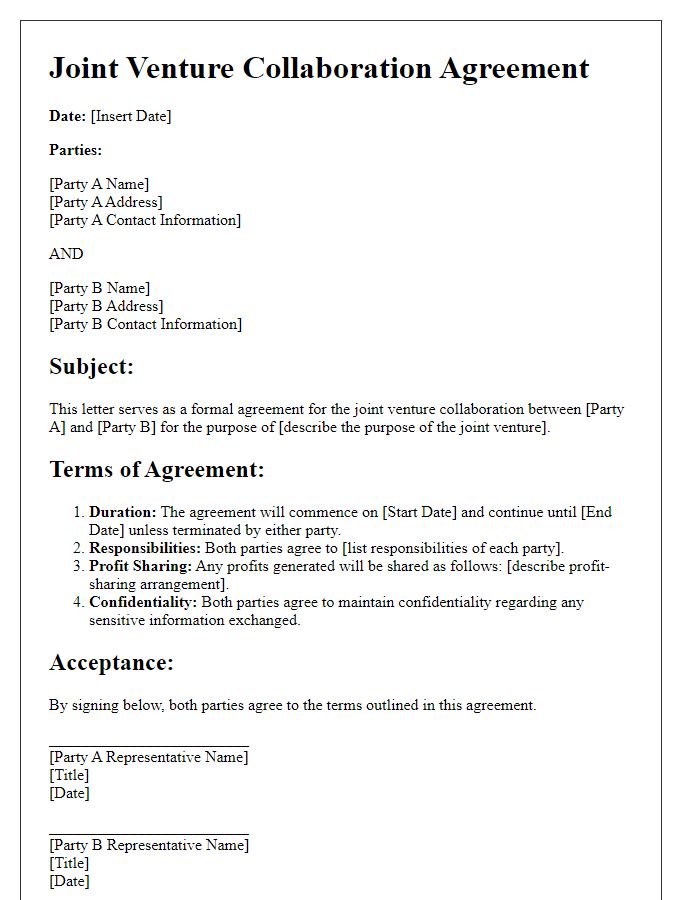

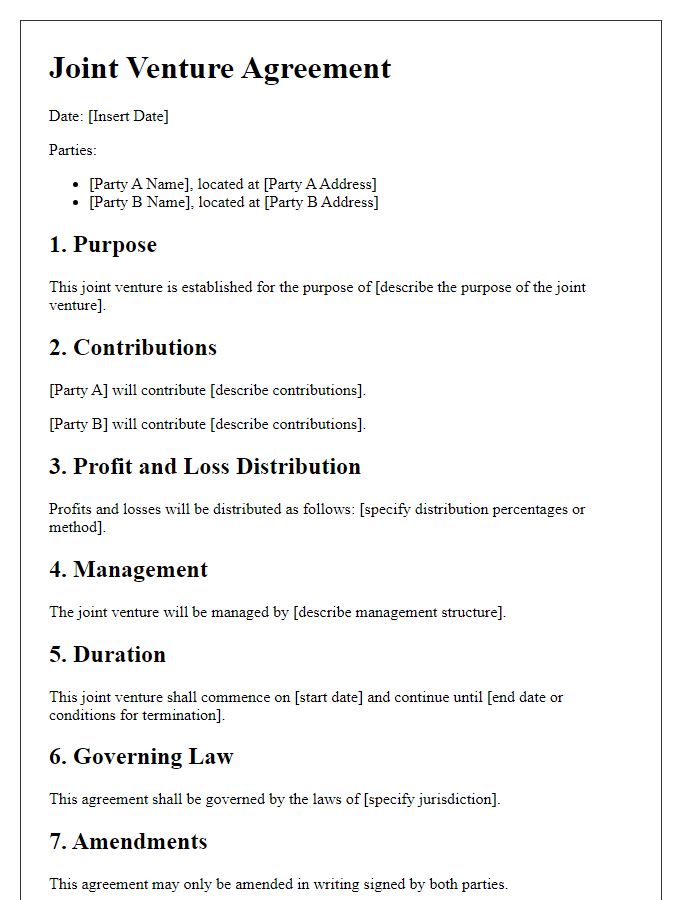
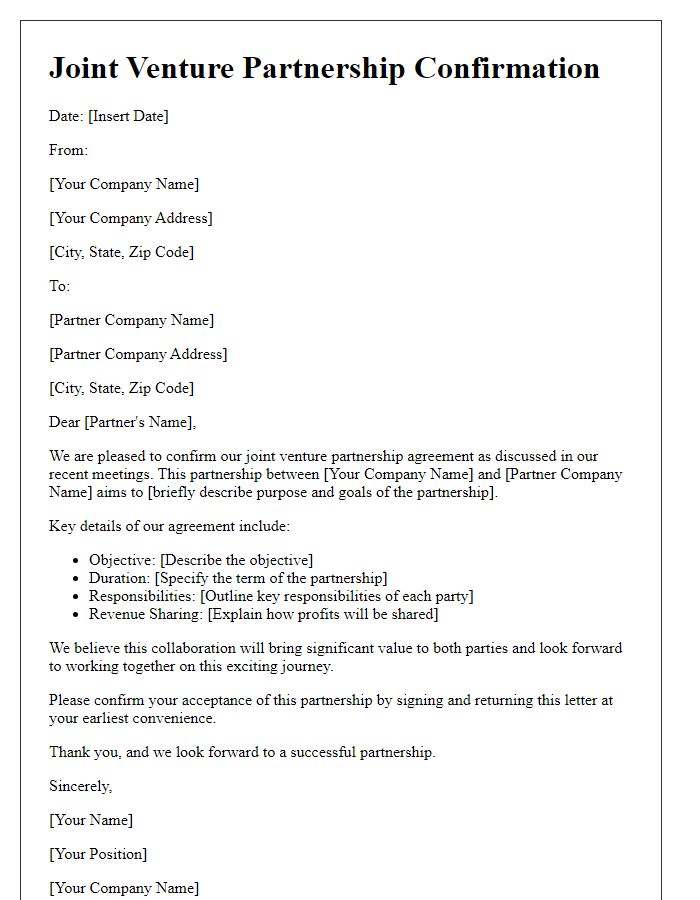

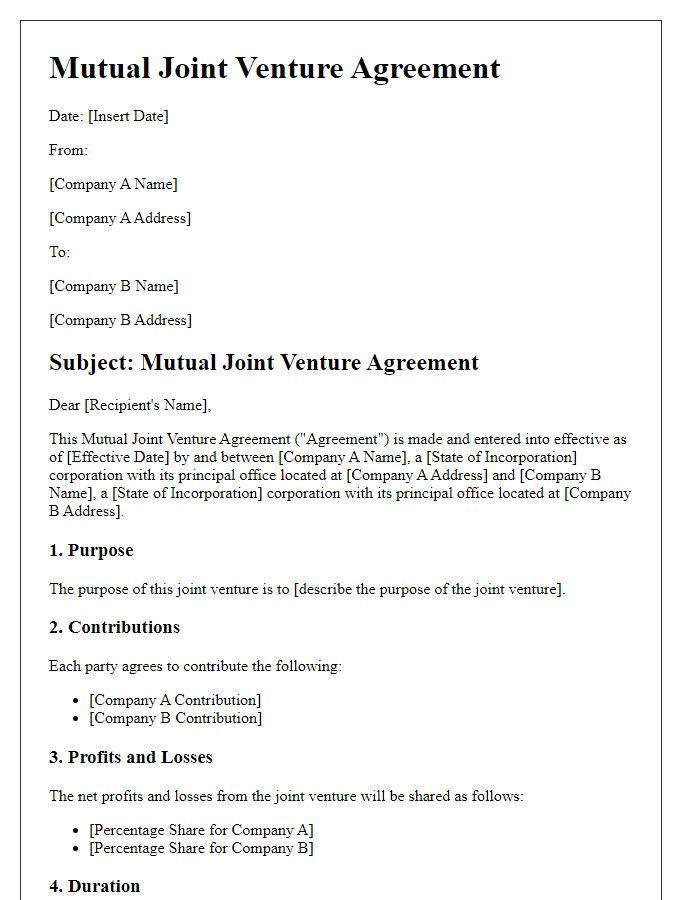
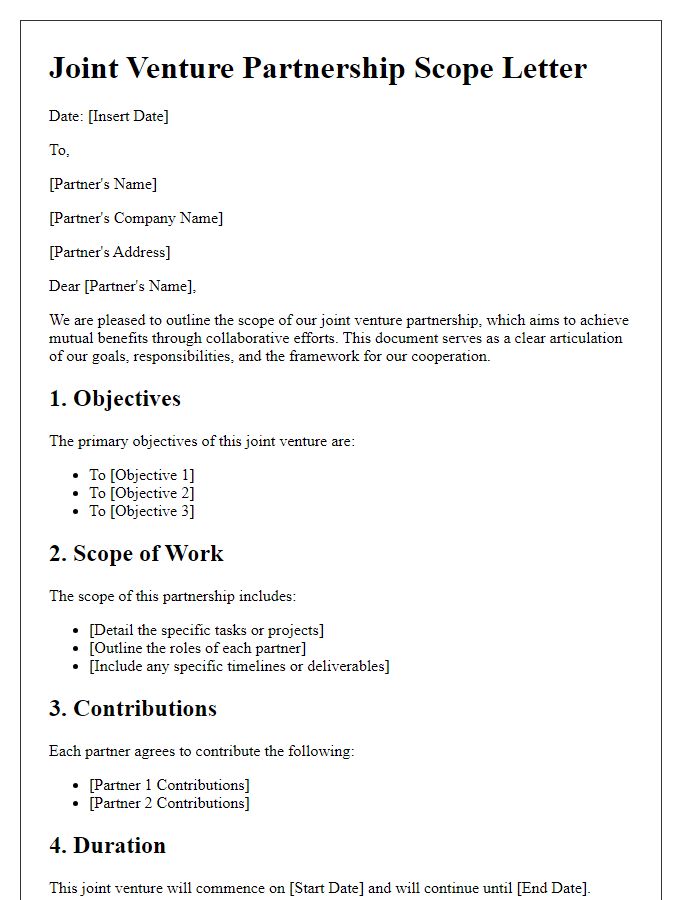
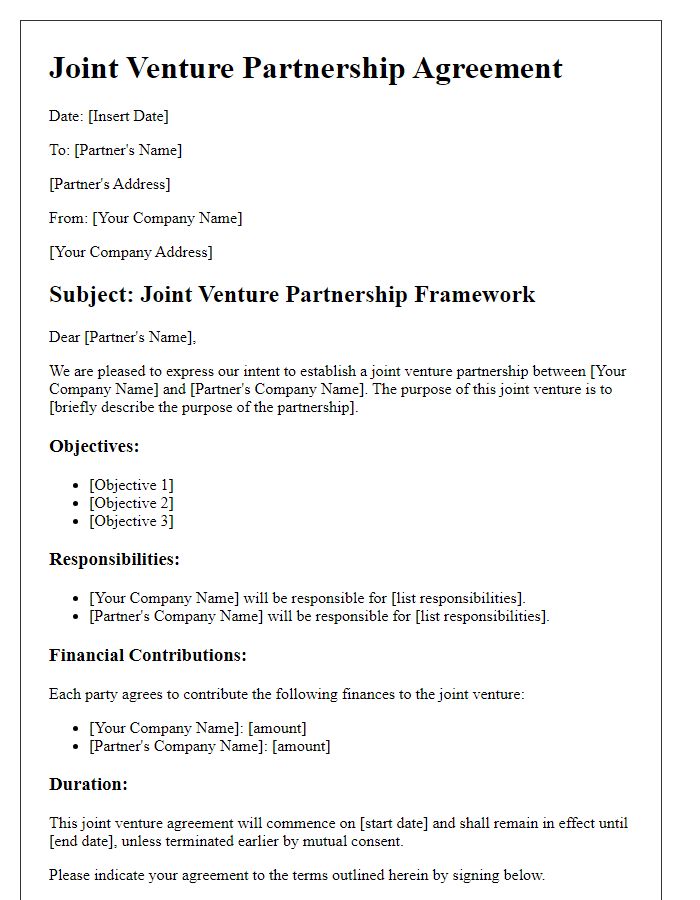
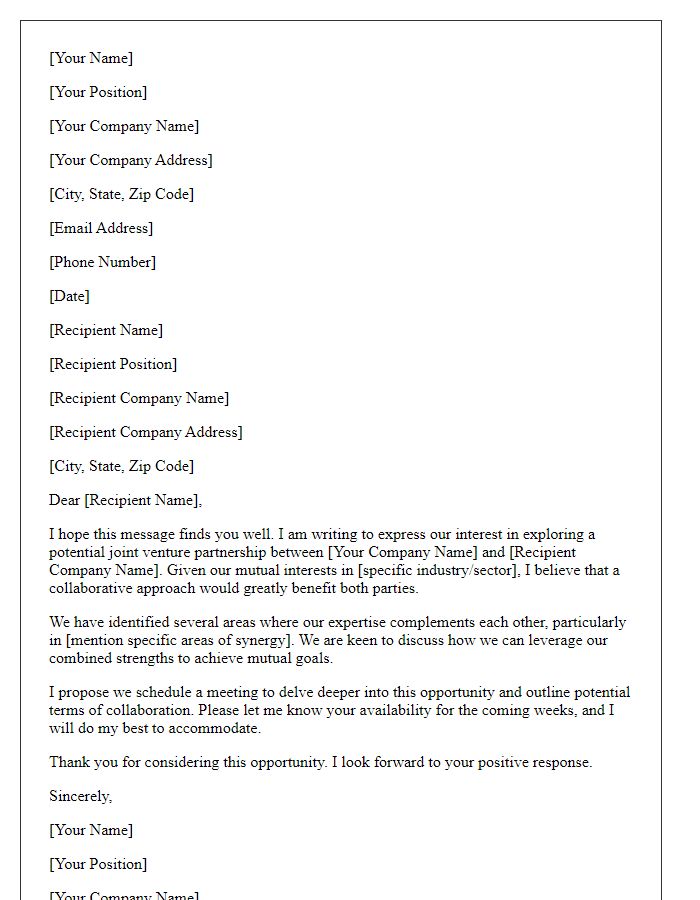


Comments